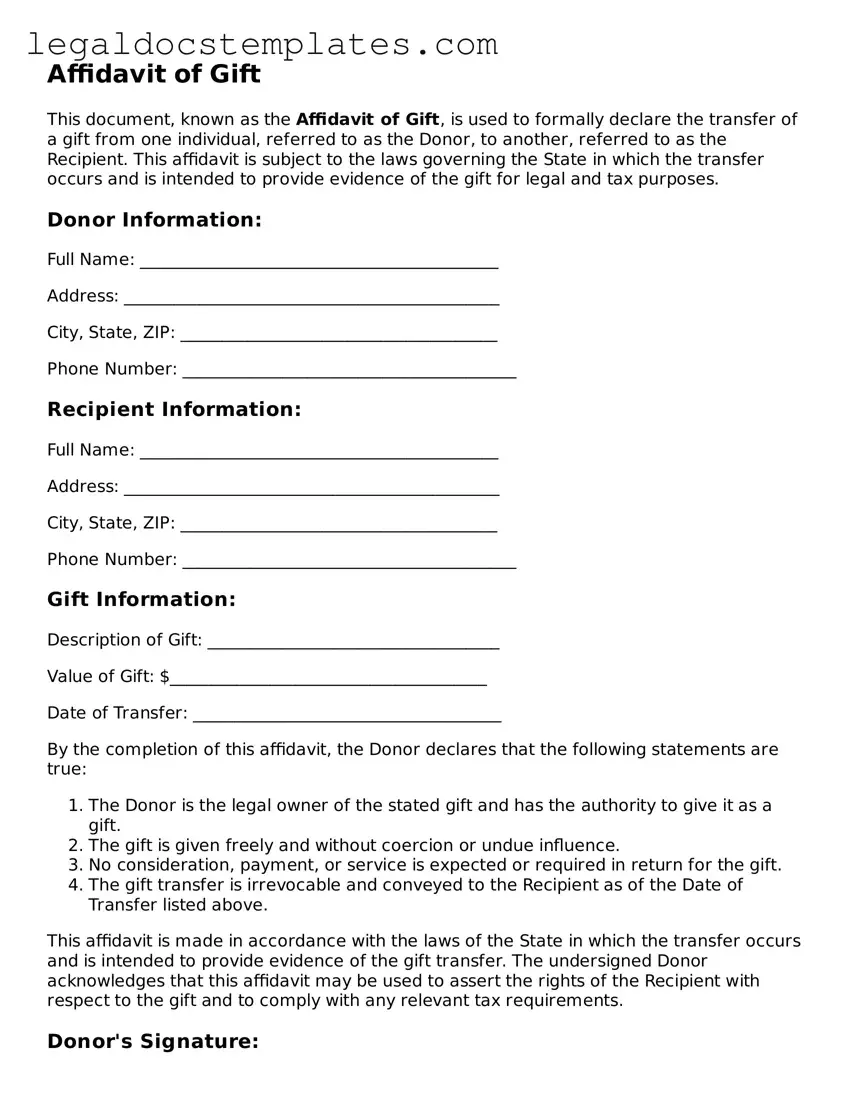Affidavit of Gift
This document, known as the Affidavit of Gift, is used to formally declare the transfer of a gift from one individual, referred to as the Donor, to another, referred to as the Recipient. This affidavit is subject to the laws governing the State in which the transfer occurs and is intended to provide evidence of the gift for legal and tax purposes.
Donor Information:
Full Name: ___________________________________________
Address: _____________________________________________
City, State, ZIP: ______________________________________
Phone Number: ________________________________________
Recipient Information:
Full Name: ___________________________________________
Address: _____________________________________________
City, State, ZIP: ______________________________________
Phone Number: ________________________________________
Gift Information:
Description of Gift: ___________________________________
Value of Gift: $______________________________________
Date of Transfer: _____________________________________
By the completion of this affidavit, the Donor declares that the following statements are true:
- The Donor is the legal owner of the stated gift and has the authority to give it as a gift.
- The gift is given freely and without coercion or undue influence.
- No consideration, payment, or service is expected or required in return for the gift.
- The gift transfer is irrevocable and conveyed to the Recipient as of the Date of Transfer listed above.
This affidavit is made in accordance with the laws of the State in which the transfer occurs and is intended to provide evidence of the gift transfer. The undersigned Donor acknowledges that this affidavit may be used to assert the rights of the Recipient with respect to the gift and to comply with any relevant tax requirements.
Donor's Signature:
____________________________________________________
Date: ___________________________
Notary Public (if applicable):
State of __________________
County of ________________
On the _____ day of ___________, 20____, before me appeared ________________________________________, known to me to be the person who executed the Affidavit of Gift and acknowledged that he/she executed the same as his/her free act and deed.
Notary's Signature: ___________________________________
Commission Expires: __________________________________
